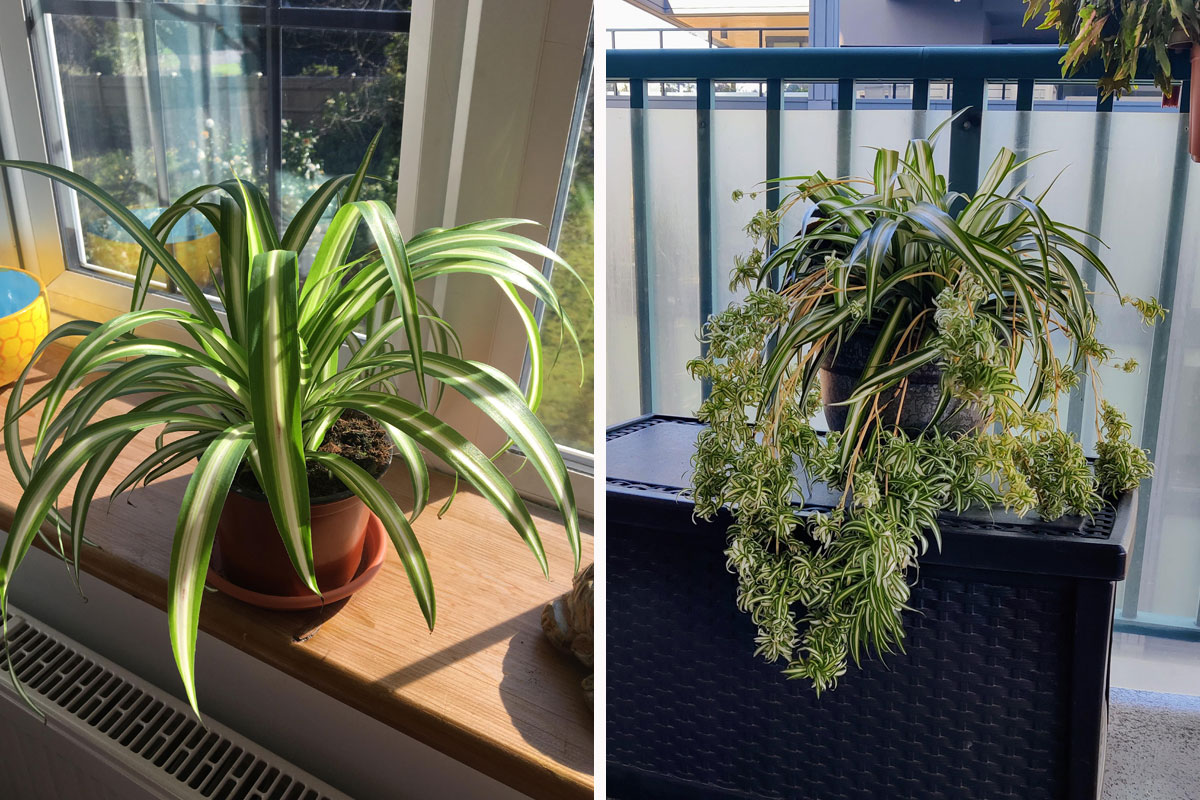
Spider Plant Care: Why You Should Let This Spider Crawl Into Your Home
It doesn’t matter if you are a rookie gardener, a super busy person who has undercared and killed many plants before, or simply someone who enjoys reading plant guides; today, we are going to introduce you to the Beyoncé of houseplants, the ever-so-graceful, popular, and beautiful spider plant!
Arachnophobes, we see you cringing and shrinking away from the screen. Don’t worry; this spider is only here to make your life better and greener, not creep you out. In fact, it’s the biggest (or one of the smallest) green flag you should have in your life. Along with how to grow and care for it, you will soon learn about the benefits it offers. And trust us, you won’t just want, but need it in your house!
Image credit: Sazzmandoo
The stunning spider plant is one of the most popular houseplants or hanging plants with slender leaves that grow up to 12 to 18 inches. These narrow leaves gently arch with green or striped green and white eye-catching hues. Once they grow up, spider plants produce long stems. Come summer, these stems adorn themselves with small, white, star-shaped flowers. Once pollinated, these flowers can produce fruits with flat black seeds.
Image credit: jrm_2019
After the blooming period, the small flowers drop off and are replaced by tiny plantlets. These spider plant babies are called “pups” and look like tiny, cute spiders due to the cascading foliage. And that’s how the plant got its name. Slowly, these pups develop their own roots and can be cut to be planted as new houseplants. Spider plants have thick, fleshy roots and rhizomes that can store water and survive irregular watering.
RELATED: The Ultimate Guide to Caring for a Venus Fly Trap Effectively
Spider Plant Basics
Scientific Name: Chlorophytum comosum
Plant Type: herbaceous perennial, mainly grown as a houseplant.
Size: 1–3 feet tall and wide
Light: Partial to full shade
Zones: 9–11 (USDA)
Origin: South Africa
Spider Plant Benefits
Image credit: BurdenedOwl
The secret behind the popularity of spider plants is that they are easy-to-grow, low-maintenance houseplants that can adapt to different growing conditions, even with inconsistent watering. So, if your hectic lifestyle has resulted in the demise of many houseplants, this one is a born survivor. Don’t worry; it won’t die under your watch or minimal care. Also, rookie gardeners, this is your go-to plant!
A study by NASA has proved that spider plants have the superpower to absorb harmful chemicals from the air and create a purified environment. Of course, one plant won’t do the trick, but if you plant many, then fresh air will greet you every second you are indoors. Another benefit that this beauty offers is that it’s a fast-growing plant. So, fresh air is just a few months away!
Pet parents, this benefit is specifically for you! Unlike a few other houseplants, spider plant isn’t toxic to your pet dogs or cats. So, feel free to place them all over the house. Their ornamental impact will dramatically spruce up any space from the kitchen, bathroom, mantel, or your bare home office. So, where is it going to be?
RELATED: How to Grow, Use, And Care For A Lavender Plant
Where, When, and How to Plant the Beloved Spider Plant
Image credit: thishouse5000
The beauty of this houseplant is that you can plant it at any time, and it will grow quickly. The only thing to avoid is exposing it to frost. As they are tropical plants, spider plants love warmth. When you plant them in house pots or hanging pots, search for the warmest spot in your house and let the plant make its home over there.
Due to their quick growth, it’s better to plant them in hanging pots and let the leaves cascade romantically. However, if you place them in house pots, keep an eye on them as they might get heavy and topple over your table or mantel. Trim the spider plant babies at the right time and let these spiders bedeck your bare spaces.
Bathrooms are the ideal spaces due to the warm shower steam. The plants will absorb this steam and stay healthy and thriving. Even when you plant them outdoors, look for the warmest spots with no direct sunlight, creating a green, spidery ground cover.
RELATED: Ultimate Guide to Growing and Caring For Ajuga Plant
How to Propagate Spider Plant
If this is your first time propagating any plant, today’s your lucky day because spider plant propagation is extremely easy. It can be done through their pups or by dividing. You can also grow spider plants from seeds. Pick one way and just follow the simple steps mentioned below.
Spider Plant Propagation from ‘Pups’
Image credit: Equal_Cup6248
On the ends of long, arching stems, spider plants produce baby spiderettes, often called offsets. These offsets eventually grow roots and can be clipped off the stems to be planted as individual plants. If you want to propagate your spider plant from ‘pups,’ follow the steps below.
Step 1. Once the pup or spiderette has grown visible roots, you can cut it off the mother plant.
Step 2. Fill a well-draining pot with potting mix, and plant the pup in it.
Step 3. Keep the soil moist to ensure the roots develop properly and the plant settles in the pot.
Ideally, it’s better to keep the spiderette attached to the mother plant when propagating instead of cutting it. To do so, plant the spiderette (still attached to the mother plant) in a separate pot. Both pots should be close together. Once the spiderette has taken root in its own soil, you can cut it from the parent plant.
Note: If you remove the pup from the parent plant before it has developed roots, submerge it in water and wait for the roots to grow.
Propagating Spider Plants by Division
Image credit: loathsomecouple
Step 1. Remove the spider plant from its container, gently loosening the roots if needed.
Step 2. Divide it into different sections while ensuring each has enough roots to regrow.
Step 3. After division, plant each section in different well-draining pots and water regularly to moisten the soil. Soon enough, it will grow and start developing its own pups.
Growing from Seeds
Image credit: ellenabellen
Growing spider plants from seeds isn’t common, as propagating from spiderettes is the simplest option. But if you want to try this fun gardening experiment, then follow these simple steps when the plants blossom in summer:
Step 1. Take a cotton swab or paintbrush and gently brush it across all the flowers to promote cross-pollination.
Step 2. After blooming, the flowers will be replaced by fruits or small green pods.
Step 3. Give these pods time to dry, then pluck them from the plant.
Step 4. Breaking them will reveal small, flat black seeds you can use to grow the plant.
Step 5. Fill a well-draining pot with seed starter mix, and plant the seeds half an inch deep. Make sure you plant many seeds, as the fertility rate might vary.
Step 6. Place the pot in a warm space and water it regularly to keep the soil moist. Slowly, a new, thriving spider plant will grace your house.
Spider Plant Care
Image credit: chengjit
Spider plants can thrive even with minimal care. So, here is the basic care guide that will help you protect and pamper this down-right gorgeous houseplant.
Light, Soil, and Water Needs
Image credit: getbusygardening
When placed in direct sun, spider plants will develop leaf scorch. Partially shaded spots, like window boxes with bright, indirect sunlight, are great options for outdoor placement. Indoors, the plants can thrive in any spot, including low-light spaces like bathrooms. However, their growth will be slower in such spots, and they might not produce pups.
Spider plants prefer loose, loamy soil with excellent drainage. While watering, ensure that the soil remains moist but not soggy. Water only when the top inch of their soil feels dry, as overwatering might cause root rot. The thick roots of spider plants will keep them thriving even if you miss a water cycle.
Note: The fluoride and chlorine in the water can accumulate in the soil and cause discoloration of leaves. To avoid this, quench the thirst of your spider plant only with filtered or distilled water.
RELATED: Air Plants Require No Soil: Full Care and Design Guide
Temperature and Humidity
Humid conditions with a warm temperature above 50 degrees Fahrenheit are the perfect setting for a spider plant. Protect them from air-conditioning vents or fans. To maintain humidity, ensure you mist the plant regularly. With this cozy environment, your plants will thrive and keep you thriving!
Recommended Product: AORAKI’s Mister is the perfect spray bottle to keep your spider plants happy and healthy.
Fertilizer Requirement
Image credit: Donna Joshi
A water-soluble fertilizer will result in a lovely spider plant when fed once a month during spring and summer. Avoid over-fertilizing (which can lead to brown leaf tips) or underfertilizing (which might negatively affect growth). Reduce the fertilizer amount during fall and winter. It’s best to follow the instructions written on the fertilizer label.
Recommended Product: Indoor Plant Food by The Grow Co will help your plant get the necessary nutrients.
Image credit: greasedmunky
Pruning
This hardy plant doesn’t require much pruning. Prune brown leaf tips or dead leaves if you notice any. You can cut off the shoots or plantlets if the plant grows too slowly. This won’t cause any harm to the spider plant; rather, it will boost its health as it will focus its energy on growing.
Overwintering
Come winter, the plant will adopt a semi-dormant condition, So cutting back on fertilizer is best. The winter dryness might harm the spider plant, so keep it moist with regular watering and misting.
Potting and Repotting
Image credit: mhmira
While potting the spider plants, use pots with proper drainage holes. After every two to three years, you will notice the roots of the plants poking out from the drainage holes or the soil above. This is a sign that it needs to be repotted to a bigger pot. Supply the plant with fresh potting soil every time you repot it.
Recommended Product: GARDENERA’s Premium Spider Plant Potting Mix will promote the healthy growth of your spider plant and give it the organic boost it needs.
Pests and Diseases
Image credit: Moonspeckle
Spider plants are tough, but just like any other houseplant, they can also be attacked by pests and diseases like spider mites, mealy bugs, aphids, scales, and whiteflies. If you notice any damaged foliage, it’s a sign of a troubled plant. Luckily, a thorough water wash is sufficient to remove the pests. If the infection is severe, consider spraying insecticide or neem oil.
Suppose a spider plant has everything it needs: proper air circulation, enough water, and bright, indirect light. In that case, it will be difficult for these common pests and diseases to attack the plant, and it’ll stay happy and healthy.
Common Problems
Image credit: xhcd
The hassle-free spider plant rarely attracts any severe problems. The two main problems that might trouble this plant are easy to solve. Let’s look at them, shall we?
Spider Plant: Brown Tips of Leaves
Exposure to the sun or the buildup of salts from water are two factors that can cause the browning of leaves. Remove these brown leaves when you see them. To avoid the browning altogether, place the plant in a spot with no direct sunlight and water it with distilled or filtered water.
Spider Plant: Sparse Growth
After every two or three years, it’s best to repot your spider plant. Otherwise, it can become root-bound, and the plant will struggle to grow. Even an excess growth of the pups can stunt the growth. Help the plant by dividing and repotting it and cutting off the spiderettes. Follow this healthy practice, and your plant will be eternally grateful to you!
Types of Spider Plants
Spider plants have numerous varieties for you to choose from. You can visit your local nursery and get the ones you want. If you need ideas, here are our favorite five:
Chlorophytum comosum ‘Variegatum’
Image credit: theoliviabloom
The ‘Variegatum’ variety of the spider plant has elongated, arching leaves with green centers and creamy white or yellow margins, giving it a variegated and eye-catching look. Despite its longer leaves, this variety produces fewer pups than others.
Chlorophytum comosum ‘Vittatum’
Image credit: Dtarazona
The ‘Vittatum’ variety has slender, pale green leaves with a creamy white stripe running down the center and develops white stems. However, it has a slower growth when compared to all-green varieties.
Chlorophytum comosum ‘Bonnie’
Image credit: mezaally
Curled green leaves with a creamy white central stripe, compact structure, and the prettiest yellow flowers are all the features of the ‘Bonnie’ variety. Due to its compact structure, ‘Bonnie’ takes up less space and can squeeze into the smallest spots.
Chlorophytum comosum ‘Milky Way’
Image credit: patty0627
The ‘Milky Way’ variety has green leaves with creamy white stripes or spots that resemble a starry night sky. This variety will add a sophisticated touch to a room bursting with bright colors.
Chlorophytum comosum ‘White Stripe’
The leaves of this variety have a thin white line running down the center. As the plant matures, this line disappears. Another unique feature of this variety is its cream or yellow flower stalks, unlike the usual green seen in other varieties.
Spider Plant Display Ideas
Image credit: sewshel
Here are a few ideas to display and show off your beloved spider plants:
Macramé hangers are a splendid decorative option to consider. As you place the pots in these hangers, they effortlessly add a boho touch to your space. Just picture your sunroom with multiple spider plants cascading from the macramé hangers; it will definitely dazzle the guests.
Recommended Product: The Mkono Indoor Macramé Plant Hanger is the one you need to make a dazzling sunroom!
Consider using artistic high shelves in your simple living room to showcase your spider plant. The plant’s cascading foliage can create enchanting green wall art, adding a touch of natural magic to your space.
Recommended Product: This WOOD MEETS COLOR 3-tier Macramé Wall Hanging Shelf is your go-to choice for placing your houseplant and sprucing up your living room.
Place the plants in window boxes or garden walls for an outdoor display. Or, directly plant them in the garden beds, creating a pleasant, grassy ground cover. But ensure all these outdoor spots are shaded to protect the plant from direct sunlight. No matter where you decide to place these spidery beauties, they will be an instant hit.
The Only Spider You Need!
Image credit: hocotts
Isn’t the spider plant one beautiful gem that you don’t just want but need? With some incredible benefits on its back, it has become one of the most popular and loved houseplants. Now you know why we called it the Beyoncé of houseplants! Speaking of houseplants, check out this fantastic guide about snake plants. Rookie gardeners, you learned how to grow one plant; try your hand at the next!
If this guide helped you in any way, let us know in the comments. Also, share this article with other green thumbs, and let greenery crawl into their lives, too!
Image credit: Whorticulturist_
Spider Plant FAQs
Where is the Best Place to Put a Spider Plant?
Fully or partially shaded spots are the best places to put a spider plant. You can hang it inside kitchens, living rooms, bedrooms, and even bathrooms.
Should I Cut the Babies Off My Spider Plant?
If the spider plant babies have developed roots, then yes, you should cut them off and plant them in a different pot. Also, if the babies are stunting the plant’s growth, you can cut them so the mother plant can refocus its energy on itself.
What Does a Spider Plant Symbolize?
In African and Asian cultures, spider plants are believed to symbolize luck, fertility, and prosperity. The cascading spiderettes also symbolize the abundance of life. In the Native American culture, they symbolize protection and healing.
10Kviews
Share on Facebook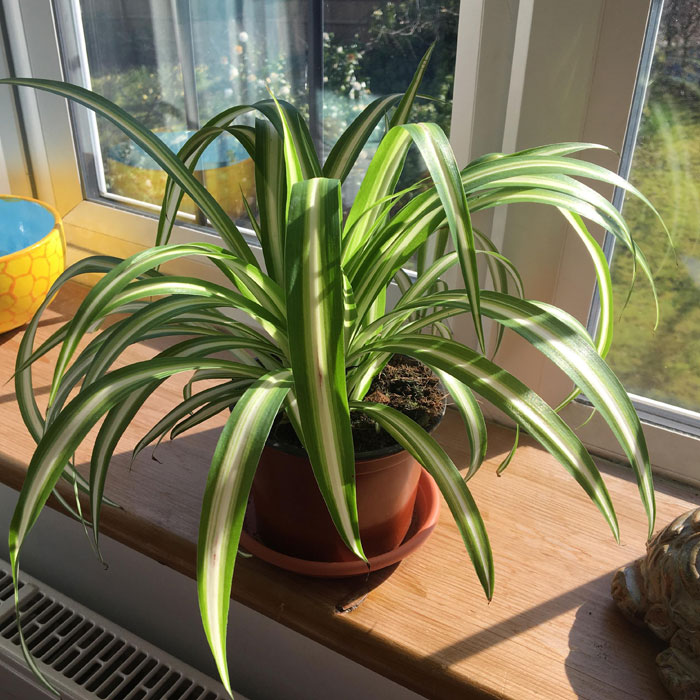
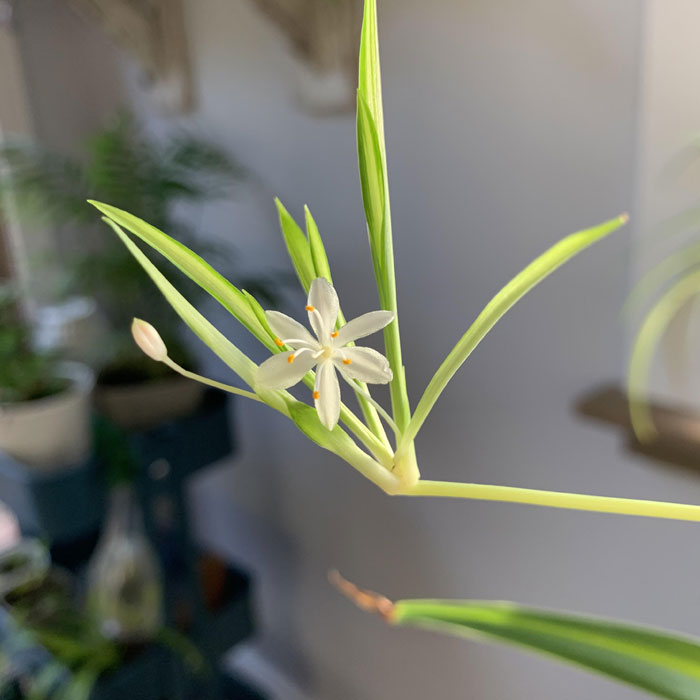
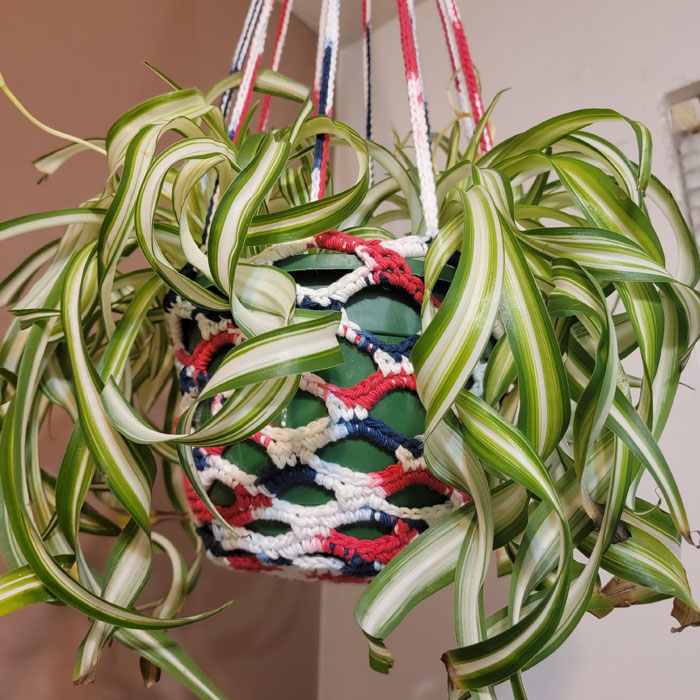
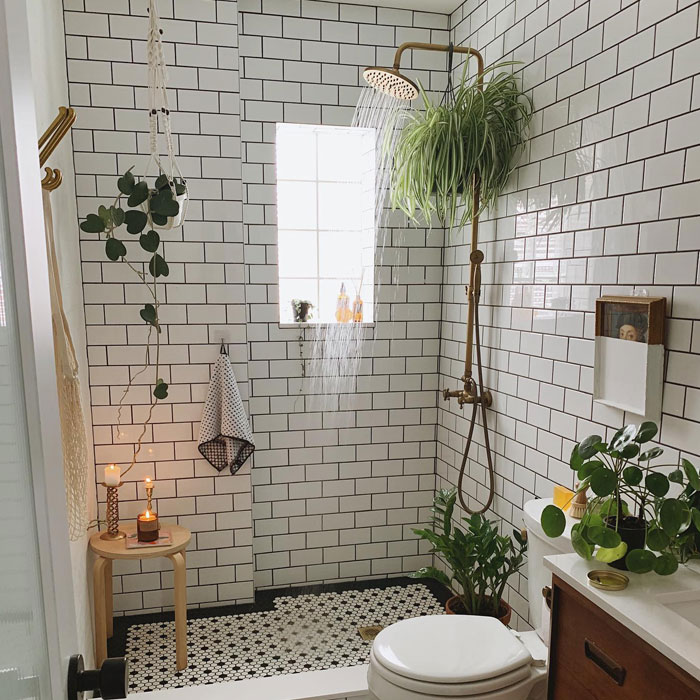
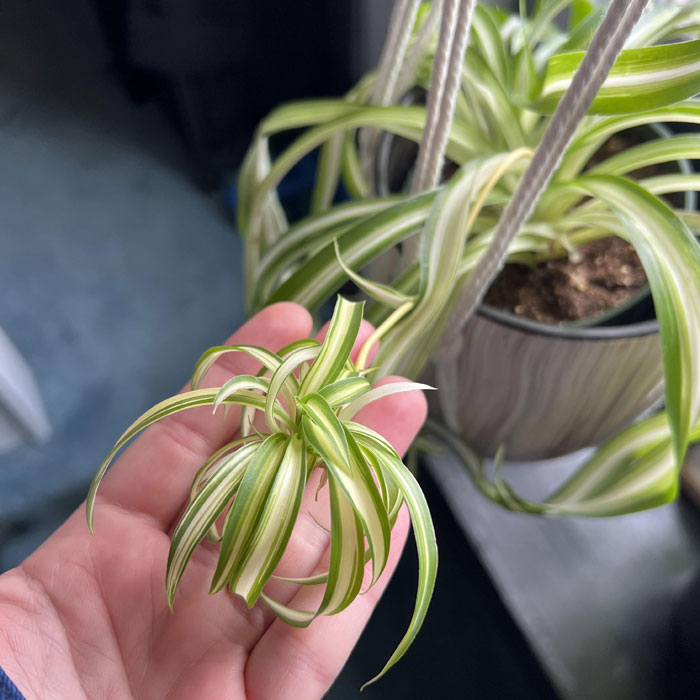



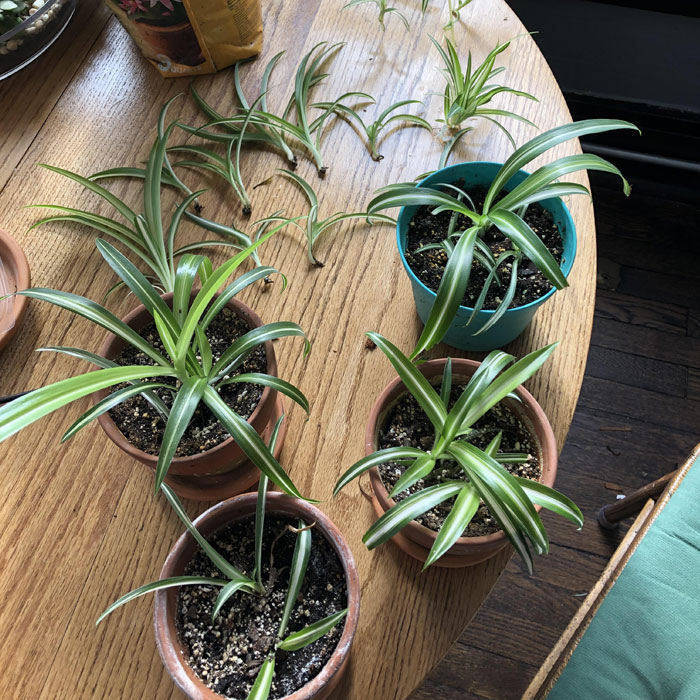



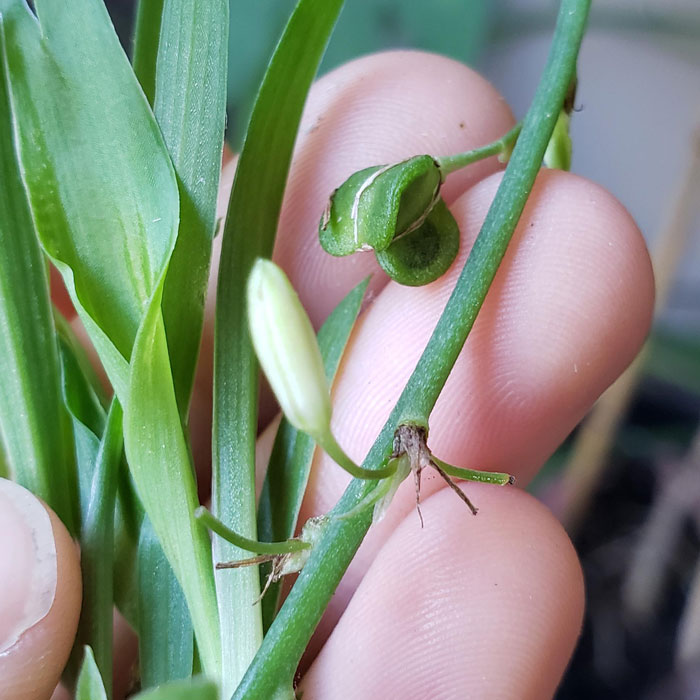






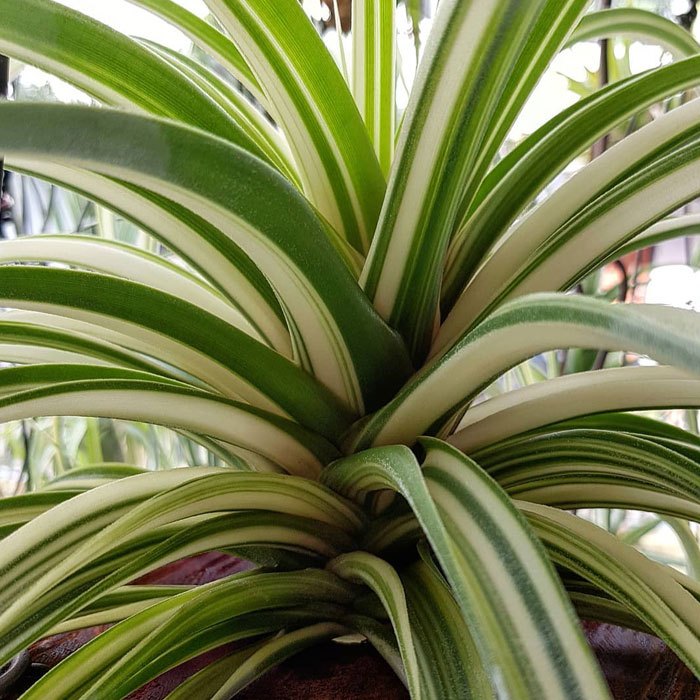
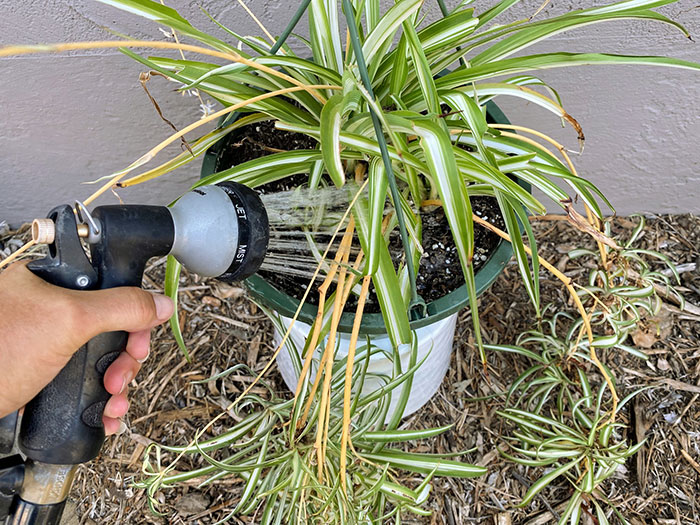
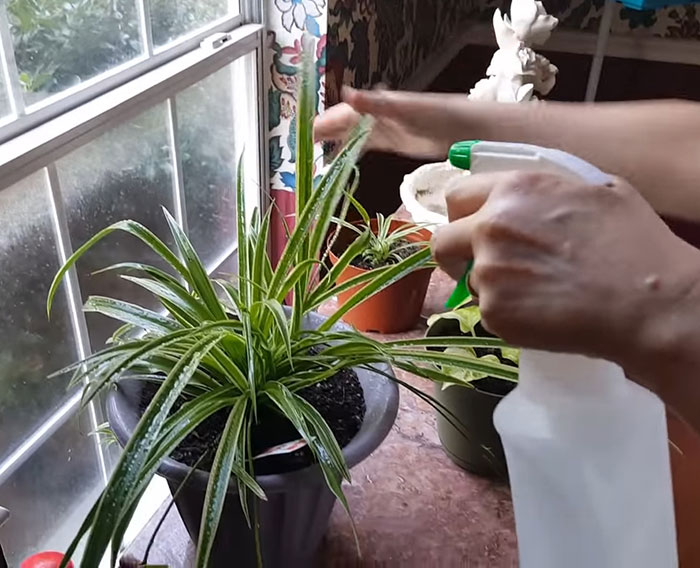
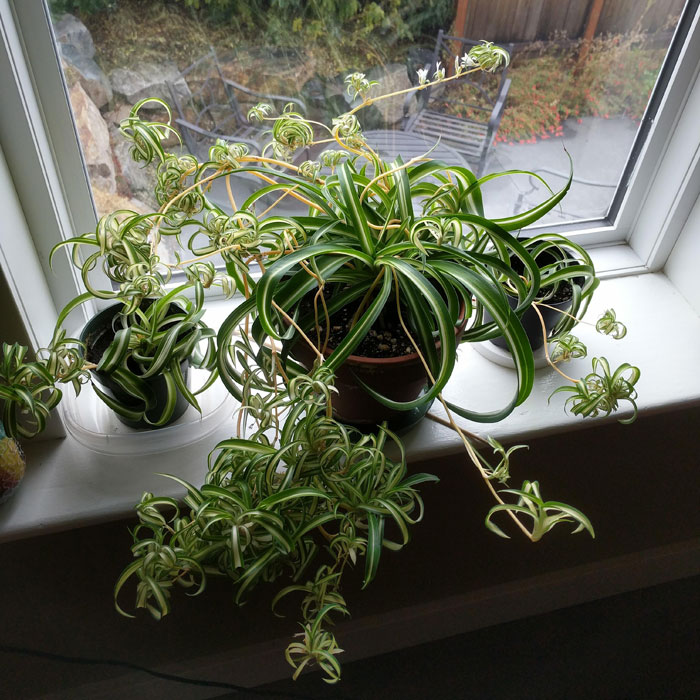
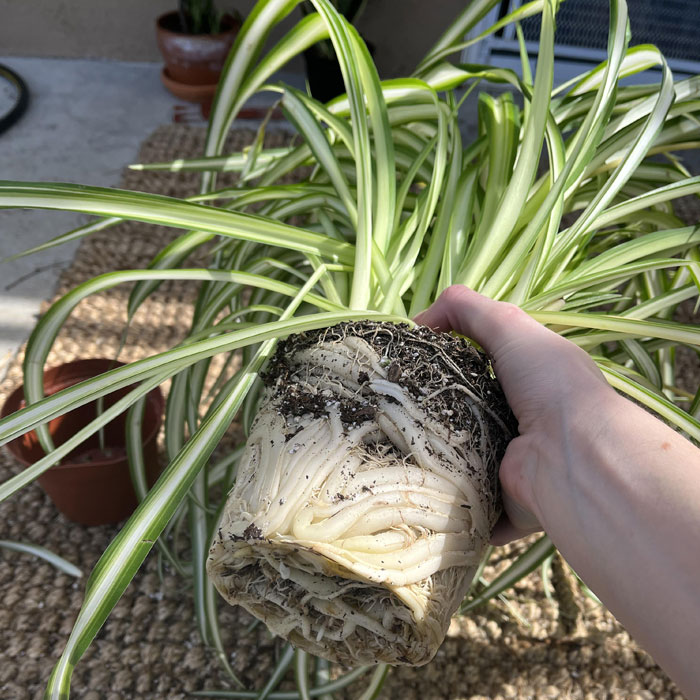
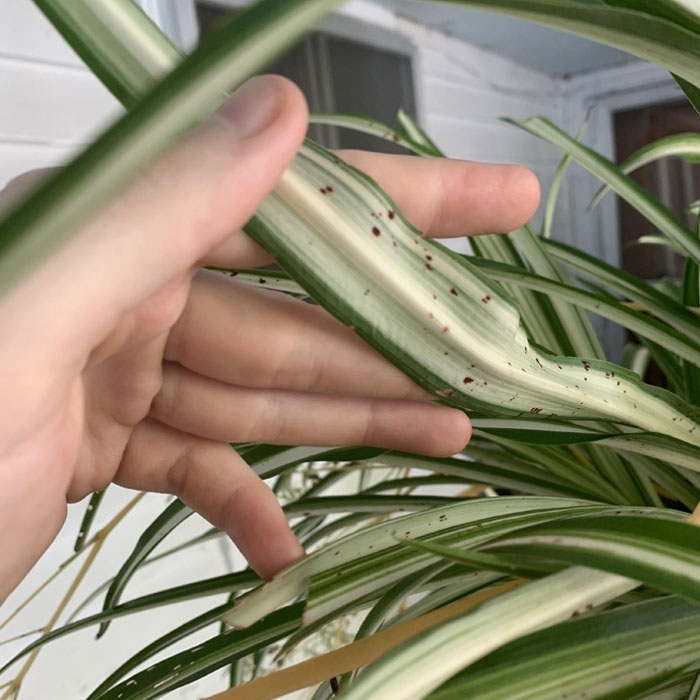
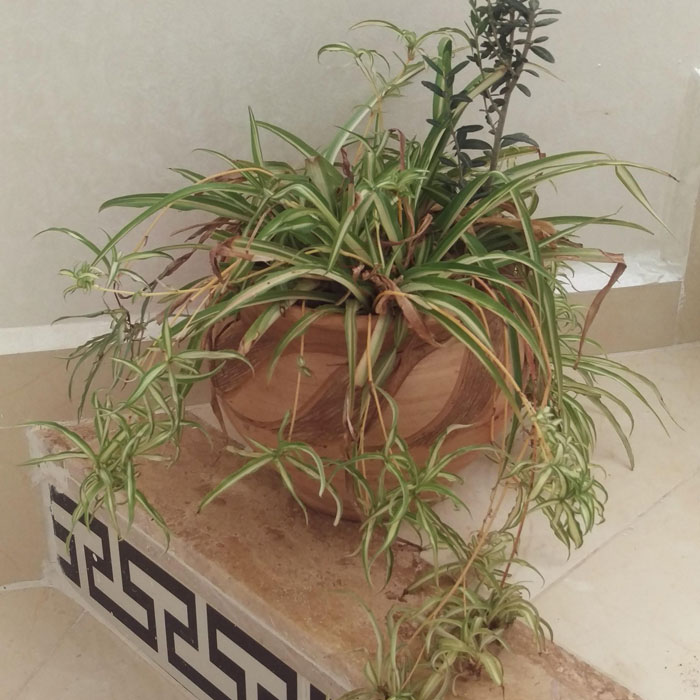
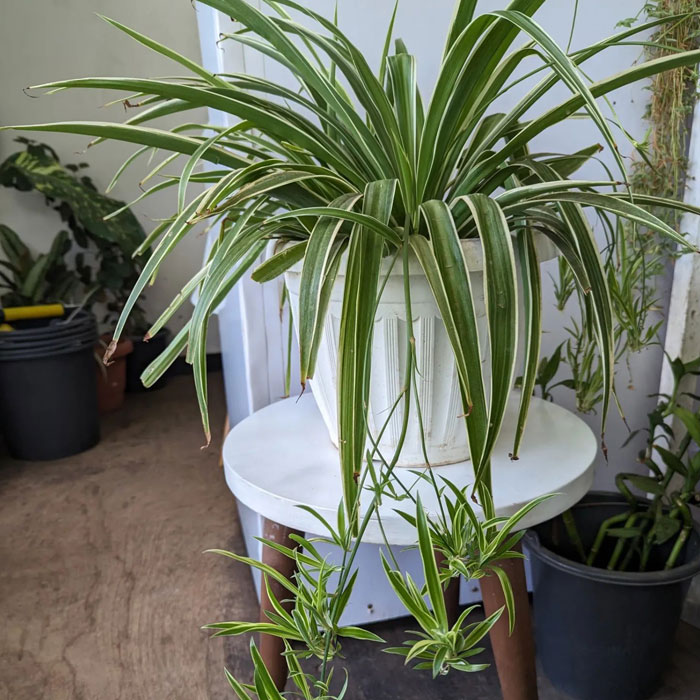
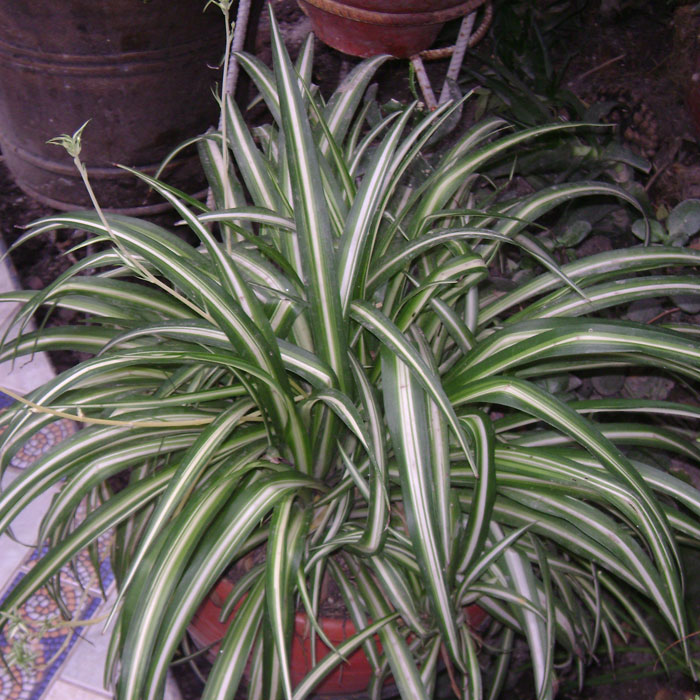
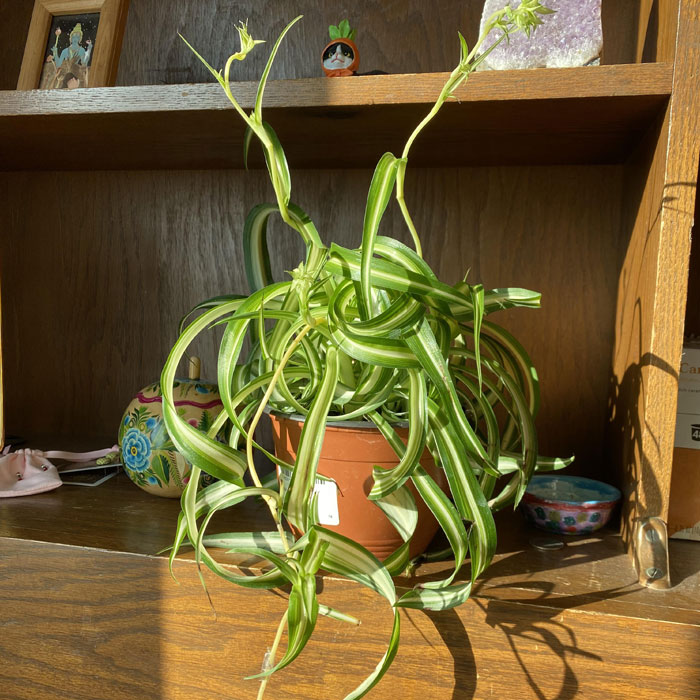
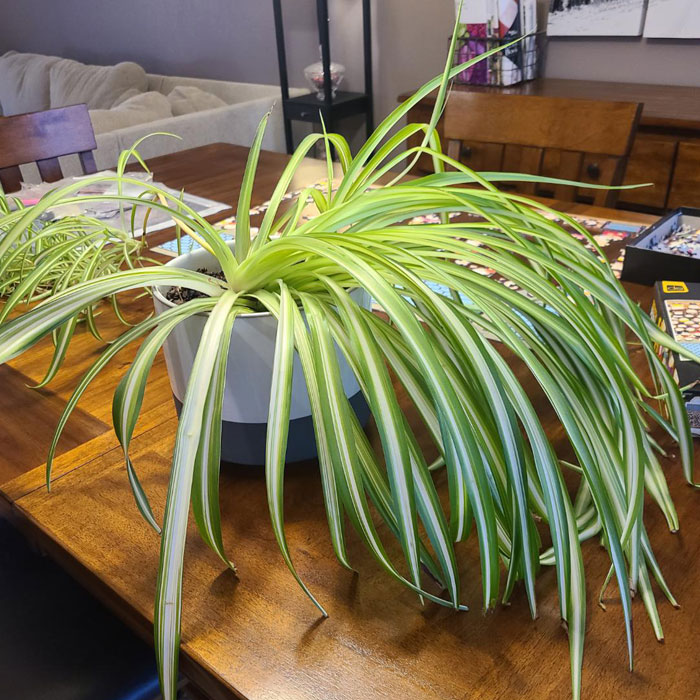
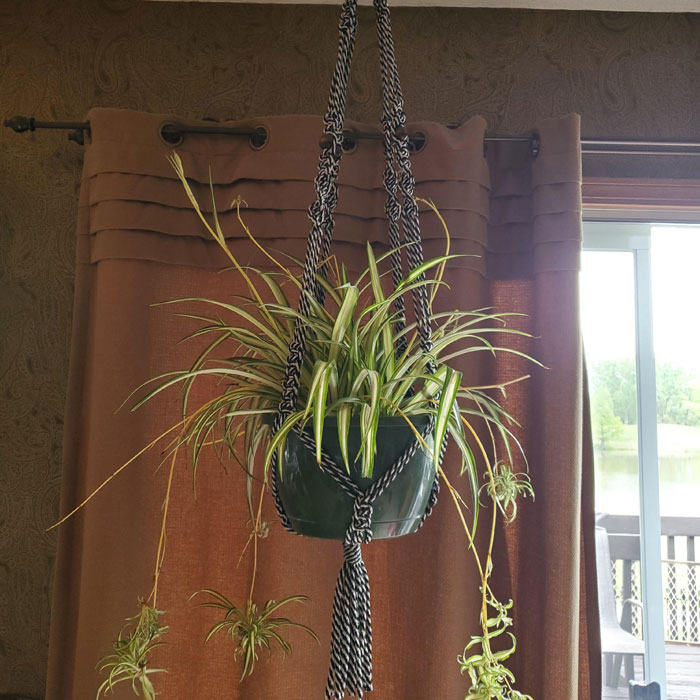
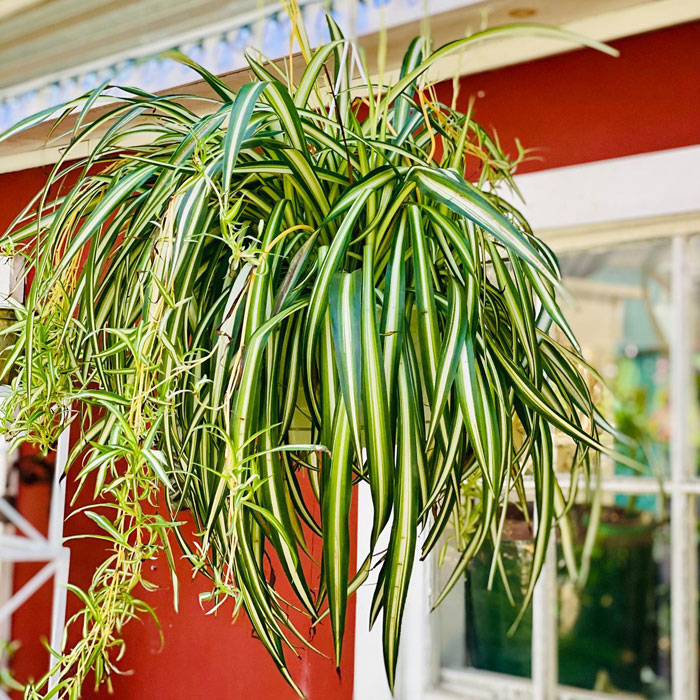
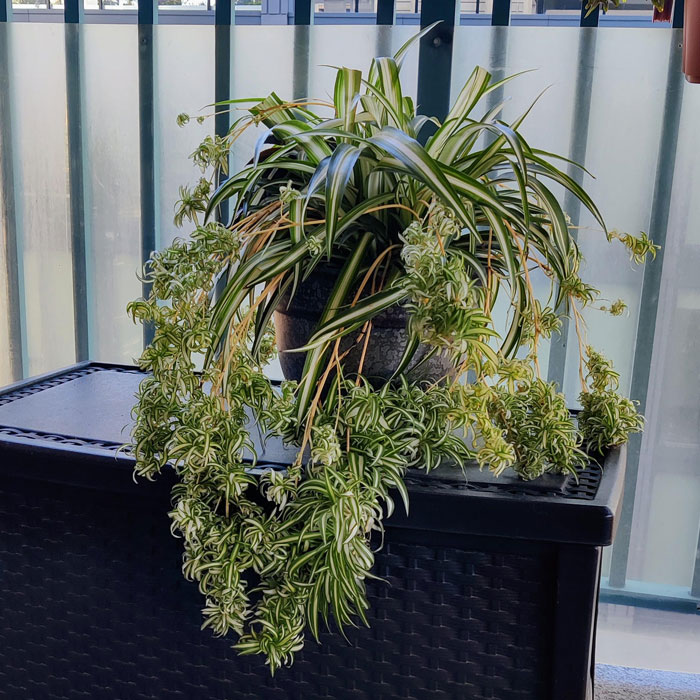




13
1